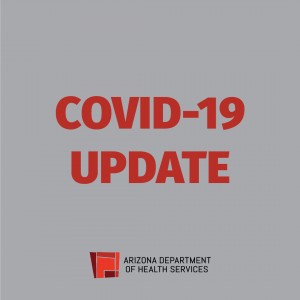 Over the past few months, we have been reviewing projections and models to ensure we have adequate healthcare resources to meet the needs of Arizonans during this pandemic. The news is encouraging: most of the current models continue to show that Arizona’s capacity is sufficient to meet the projected need for hospital beds and ventilators.
Over the past few months, we have been reviewing projections and models to ensure we have adequate healthcare resources to meet the needs of Arizonans during this pandemic. The news is encouraging: most of the current models continue to show that Arizona’s capacity is sufficient to meet the projected need for hospital beds and ventilators.
Several weeks ago, ADHS requested permission from our federal partners to release the modeling provided by the Federal Emergency Management Agency (FEMA) and the Assistant Secretary of Preparedness and Responses’ office in the U.S. Department of Health and Human Services (HHS). FEMA has now authorized us to make that model public.
As a brief recap, ADHS is monitoring a number of different models. Back in February and March, the Arizona Department of Health Services (ADHS) developed an initial Arizona projection that estimated 13,000 additional inpatient beds and an additional 1,500 ICU beds would be needed to care for Arizonans with COVID-19, with our peak resource needs falling between the middle to end of April. Using those numbers, ADHS started to develop plans and work with healthcare partners to ensure we would have enough access to care to meet the demand. ADHS also continues to partner with experts from Arizona State University and the University of Arizona and recently received an update to their model.
In April, our federal partners from the Centers for Disease Control and Prevention (CDC), the Assistant Secretary for Preparedness and Response (ASPR), and Federal Emergency Management Agency (FEMA) shared the modeling they had built for Arizona based on projection formulas developed by Johns Hopkins University. This federal model takes into account the current data from the state as well as the mitigation strategies Arizona has put into place. This model is updated regularly and is the tool the federal government is using when determining resource allocations on a national level.
This model previously predicted our peak resource utilization to occur around June 11, assuming our mitigation strategies were lifted at the end of the current Stay Home, Stay Healthy, Stay Connected order on April 30th. That order was extended through May 15th and was just recently lifted. The most recent model, dated May 7th predicts, even with the mitigation strategies lifted, that our current resources, including inpatient beds, ICU beds, and ventilators, are sufficient to meet a healthcare surge due to COVID-19.
We are also monitoring models that are available online. It’s important to note: these models all vary dramatically and are updated as new data is available. The two most prominent are found at healthdata.org and COVIDActNow.org. The COVIDActNow.org model, updated on a regular basis, incorporates current data and the state’s mitigation strategies and is currently showing that Arizona is predicted to be able to meet any COVID-19 healthcare requirements with our current available capacity and our current mitigation strategies in place. The IHME modeling at healthdata.org for Arizona shows an increase of needed hospital resources in June and predicts that the future need for ICU beds will exceed what they report our current capacity to be. However, with the executive order requiring hospitals to increase their medical-surgical beds and ICU beds, and our real-time data on hospital beds, Arizona still has sufficient capacity to manage their predicted number of patients.
While the models may try to predict what lies ahead, they are simply predictions. As you can see, the model projections continue to vary widely and are highly sensitive to any mitigation strategies. ADHS uses the models to identify potential resource needs. All of our efforts to date have allowed our healthcare system to increase resource capacity to meet Arizona’s healthcare needs. As our data evolves, so will our response. Moving forward, the best course of action is to continue using all of our real-time, Arizona specific data that anyone can access on our website to assess the health of our healthcare system and evaluate the trend of our cases to continue making decisions that are best for Arizona.









